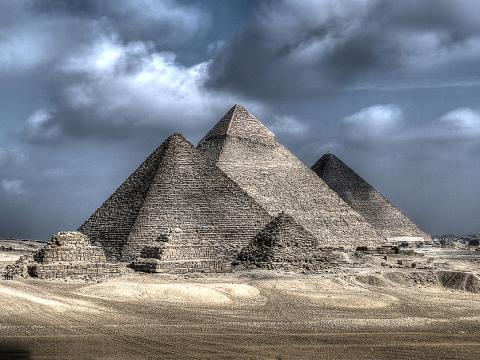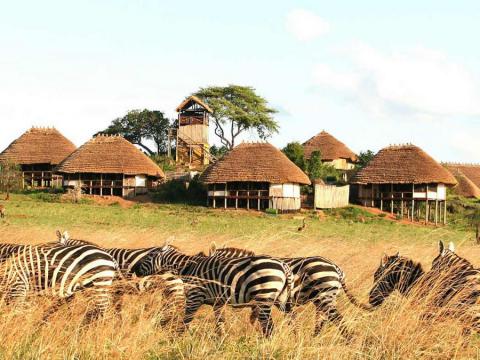Introducing Cape Verde
Cape Verde is a West African republic. It is a group of Atlantic Ocean islands located west of Senegal. Cabo Verde, located 311 miles (500 kilometers) west of Senegal, is a breathtaking island chain with a captivating mix of mountains, beaches, and quiet seaside villages. On Santo Anto, craggy peaks conceal piercing green valleys of flowers and sugar cane, perfect for long hikes.

Cape Verde (population 550,000 in 2019) is 500 kilometers from Africa's west coast. The previously uninhabited islands were discovered and colonized by the Portuguese in the 15th century, and they later became a trade center for African slaves, as well as an important coaling and resupply stop for whaling and transatlantic shipping. In 1975, the country gained independence.
Most Cape Verdeans are descended from both African and Portuguese ancestors. The official language is Portuguese, which is used in all official publications and announcements, as well as in industry, media, and schools, but the local language is Cape Verdean Creole (Kriolu kabuverdianu), a Portuguese-based creole language with 90-95 percent of the words derived from Portuguese and the remainder primarily from West African languages. It is divided into nine dialects spoken throughout the region. Despite the fact that Kriolu is understandable to a qualified Portuguese speaker, almost everyone can also speak Portuguese as a second language. A significant number of Cape Verdeans also speak English; in general, Kriolu is the first choice, Portuguese is the second, and English is the third.

The government announced in 2013 that the country's official name will not be translated into foreign languages, and the country is now known as the Republic of Cabo Verde, or simply Cabo Verde, though only time will tell if this move will become widespread.
The culture can be represented as a mash-up of African and Latin cultures. Morna is Cape Verde's cultural gift to the world, a lilting, rhythmic type of music that arose on the archipelago (probably on Boa Vista) at some unspecified point in the 18th century. Its spiritual leader is Cesaria Evora, a singer known as the "Barefoot Diva" who was born in Sao Vicente and was so beloved that her airport has been named after her after her death in 2011. Her strong voice and mastery of melody can still be heard in her birthplace, the island capital of Mindelo.
The country's level of wealth is about average, still low by Western standards but higher than some African countries. With adequate education and healthcare, the government is also very successful in raising the development standard. Unemployment, on the other hand, is extremely heavy. People's appearances range from dark skin in Praia (Santiago) to more mestizos or mulatos (mixed skin) in Mindelo (Sao Vicente) and all in between. If you are used to traveling in the third world, it is not a dangerous country in general, however it appears and is certainly riskier than what you are used to coming from the West. The biggest thing to be concerned about is street robberies (with possible use of knives and gun). The weather is good, with plenty of sunshine and little rain. The food is mostly fish, with some Portuguese and local elements thrown in for good measure.
Cape Verde is made up of ten key islands and about eight islets. The major islands are as follows:
Santiago island
The first island settled in Cape Verde. It is home to the new capital, Praia, as well as the original capital, Cidade Velha, and the majority of the country's population.
Santo Antão
A rugged island that is well-known as a hiking paradise. It is mostly made up of small villages and is easily accessible by ferry from Sao Vicente.
São Vicente
The country's second largest island, which is home to the city of Mindelo, regarded as Cape Verde's cultural capital.
Santa Luzia
This is something of a bio-reserve and is not open to the public. It is the only uninhabited island in the archipelago.
São Nicolau
A less well-known island that is difficult to reach due to less flights and boat connections. It appears to have spectacular nature spots that are exclusive, but it lacks a larger city and tourism options are small. You'd be fortunate to find a hotel that has fast wifi, for example. There aren't many airbnbs either.
Sal
The most well-known island for tourists, with stunning white-sand beaches and a number of larger resorts. There are direct flights from Europe to here. There are no real cities here, and the people who live here depend entirely on tourism. It is mostly a tourist resort island, but it is very scenic.
Boa Vista
A larger island that seems to be a combination of everything. Excellent beaches, but not the finest. There are several villages with a little more population, but they are not towns. Overall, there are good boat links to other islands. It does not appear to be a popular tourist destination, but it is probably not a bad choice in general.
Maio
This is an island just off the coast of Santiago, but it is still very difficult to access, with few connections from anywhere. It is also said to have beautiful beaches and sand dunes. In that sense, it competes directly with Sal for the best beaches on the island. This island has very little infrastructure and only a few people live there. It is one of the islands with the greatest amount of untapped potential.
Fogo
A very unusual island with a large black volcano that is well-known among hikers. It also has black sand beaches, and visiting here seems to be a very different experience. It is still remote, with few people, so there are mostly villages and few options for lodging.
Brava
The smaller island next to Fogo, which is regarded as a miniature Santa Antao and competes with it for the best hiking in the world. There are only a few small villages here, and they can only be reached by ferry from Fogo. This might be a perfect choice if you want to be in a very beautiful yet remote part of the world.
Last modified on 04/25/2021 - 02:51
Places 0
Currently there are no places in Cape Verde.
Articles 1
Trip reports 1
Videos
Currently there are no videos of Cape Verde.








